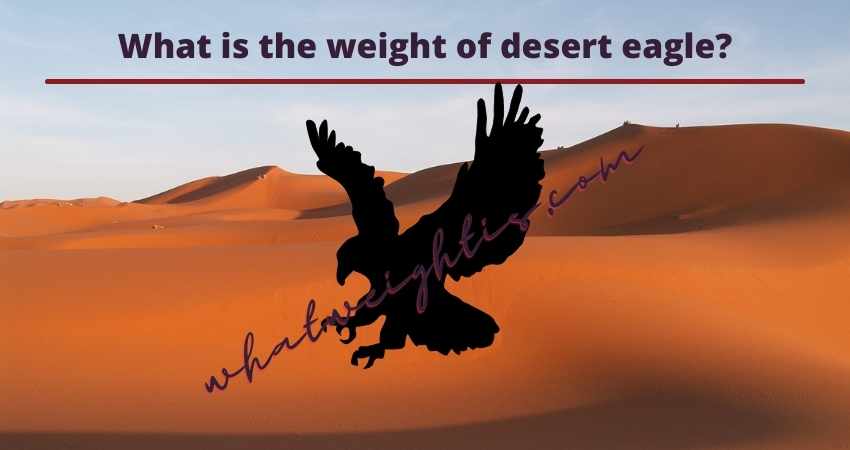Certain rifle names convey power and prowess. A name is the “Desert Eagle.” The Desert Eagle semiautomatic pistol, known for its power and iconic style, has captivated gun enthusiasts and action movie fans. These pistols are known for their striking appearance and powerful firepower, but also for their weight. We investigate the Desert Eagle’s weight and its causes in this exploration.
First Impressions of the Desert Eagle: Form and Function
The Desert Eagle is unique at first glance. With its large size and aggressive design, this semiautomatic handgun by Israel Military Industries (now Israel Weapon Industries) seems futuristic. Weight is a key factor in its unusual appearance.

The Numbers: Desert Eagle Weight?
The Desert Eagle pistol’s weight depends on its model and materials. Desert Eagles weigh 4.5 to 4.85 pounds (2.04 to 2.2 kilogrammes). This is far heavier than most semiautomatic pistols, which weigh 1.5 to 2.5 pounds.
I
What is the weight of bald eagle?
Unpacking Design Factors: Weight
The Desert Eagle’s weight is due to its design, engineering, and materials.
Size and dimensions: The Desert Eagle is longer than other pistols, sometimes over 10 inches. This greater size provides for a longer barrel and grip, accommodating strong ammo and making shooting pleasant. Naturally, increased size increases weight.
Calibre and Ammunition: The Desert Eagle can fire high-powered cartridges like the.50 Action Express (AE) calibre. These larger and more powerful rounds require a stronger build and recoil mechanism, which adds to the pistol’s weight.
Durable steel and aluminium alloys make up the Desert Eagle. Durability and resistance to high-powered circular forces make these materials ideal. These materials strengthen and weigh the pistol.
In contrast to many semiautomatic handguns that use recoil, the Desert Eagle uses gas. This mechanism helps the handgun handle recoil, but it also adds weight due to additional components and a wider frame.
Recoil Management: The Desert Eagle’s hefty weight reduces high-caliber bullet recoil. A heavier handgun is more stable and easier to manage during rapid firing, offering it a tactical benefit in some situations.
Accessory Rails and Enhancements: Many Desert Eagle models have accessory rails for optics, lights, and lasers. These upgrades might also weigh the pistol.
Balance Act: Weight vs. Performance
The Desert Eagle’s weight is distinctive, yet it raises problems regarding performance-practicality balancing. A pistol’s weight affects its handling and comfort.
The Desert Eagle’s weight helps recoil management, letting shooters to control potent shots more accurately. When firing high-powered cartridges, excessive recoil can impair accuracy and follow-up rounds. The Desert Eagle’s weight and size reduce muzzle flip, improving shot accuracy.
The Desert Eagle’s weight can be a drawback in some situations. Its size and weight make it unsuitable for covert carry or fast draw. Due to its bigger grasp, it is impractical for smaller hands.
In conclusion: A Massive Heft
The Desert Eagle’s weight is part of its identity. This semiautomatic pistol’s weight matches its powerful performance and impressive appearance. While the weight may hinder portability and concealed carry, it improves recoil management and accuracy.
Whether you see the Desert Eagle as a symbol of strength or a powerful tool with benefits and cons, its weight matters. Innovation will focus on balancing power, performance, and practicality as firearm technology advances. The Desert Eagle illustrates the fascinating link between weight and weapon until then.
Mr. Jahangir Alam is an Electrical & Electronics Engineer with a wide range of experience in several fields of Engineering. He finds engineering articles to be very interesting, and that is why he likes to write them. To know more about him, please click here.

